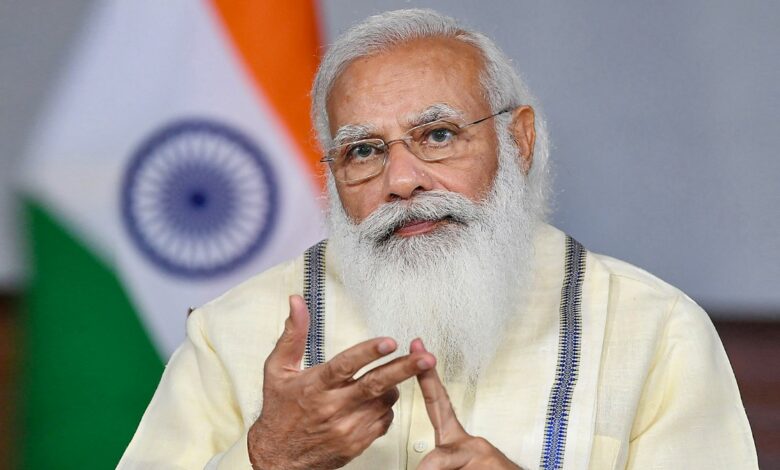US tries to kick up a stink by imposing punitive tax on India’s DST. India has every right to harness its market size

The United States on Wednesday suspended the punitive tariffs for six months levied on Austria, Italy, Spain, Turkey, United Kingdom and India. To counter the DST levied by India the US increased import tariff on certain Indian products. It said that it will continue to investigate digital service taxation, will also negotiate with OECD and G20 to reach a consensus.
US trade Representative Catherine Tai in a statement said that the US is trying to unearth a multilateral solution for Digital service taxes and international taxation. She also mentioned that United States wants to reach a consensus on these matters and hold appropriate negotiations with OECD and G20. The suspension of punitive tariffs will buy time for negotiation. If future warrants tariffs under section 301 will be imposed. The USA imposed these punitive taxations because it found out that countries like India, United Kingdom, Spain, Turkey, Austria and Italy are discriminating against American digital companies. The investigation concluded that these taxes are inconsistent with principles of international taxation. USTR investigated that out of the 119 companies that come under the ambit of digital services taxes 72% of them were American
What is section 301 investigation?
Section 301 investigation comes under the Trade Act of 1974. It was approved to help industries in the United States to become competitive. The act meant to promote a fair world economic system, promote free competition between the US and other countries, foster growth and economic development and promote free competition.
Section 301 investigations authorise the President of America to leave no stone unturned to remove trade barriers that violate the international trade agreements. It promotes the usage of tariff and non-tariff retaliation measures to a policy that is unjust, discriminatory or restricts US commerce. The investigations can be initiated by USTR. The section demands for negotiation and settlement with the foreign country in the form of elimination of trade barrier or compensation. The act also empowers USTR to forego seeking a permit from World Trade Organisation to enforce actions. The investigations may also lead to dispute settlement proceedings in WTO, FREE Trade Agreements, North American Free Trade Agreement (NAFTA). The United States government is also authorised to impose unilateral trade sanctions like the Generalised System of Preferences (GSP). The irony is that no members of WTO can challenge section 301 investigations unless they get approval under the WTO Understanding on rules and procedures governing the settlement of disputes body. It means you cannot go against USA.
What are the principles of international taxation?
Different countries follow two basic principles of international taxation
Resident space taxation – This principle asserts that natural persons or individual can be taxed in the resident country or their tax jurisdiction in which they declare residence. When it comes to companies or firms the place at which their administration is practised is considered to be their residential place.
Source-based taxation – NRI who are residents of one country but earn from another country come under this category. The agreement allows the country which provides them with income has the right to tax them.
What is the case against India?
As far as India is considered, USTR proposed levying additional tariffs up to 25% ad valorem. This amount is exactly equal to the amount that India would collect from the US companies in the name of DST. It looks like the US is trying to settle a score with India.
All 26 categories of goods are identified in the preliminary list of products that would be subjected to this unnecessary additional tariff. This list includes Basmati rice, secret paper, cultured pearls, semiprecious stones, silver powder and silver articles of jewellery, gold mixed link necklaces and chains, Bentwood furniture and shrimps.
What is India taxing foreign companies?
India is the pioneer county to introduce an equalisation levy of 6% in 2016. But this levy was only restricted to online advertisements. Equalisation levy taxes income earned by foreign e-commerce companies that do business in India. It is aimed at taxing business to business. Since these companies don’t have any physical presence in India they were out of the ambit of taxation. India is a very big market for e-commerce companies and others. And if the business is carried out in the Indian market, India has the right to tax the titanic income.
Equalisation levy brings Indian companies and foreign companies who are into the e-commerce business at par. Indian e-commerce companies are already paying taxes as per the income tax act. Foreign e-commerce companies pay the equalisation levy because they conduct business in India, but are saved from paying income taxes due to no physical presence.
India slowly started expanding in the scope of equalisation levy totax non-resident digital entities.
Later in the year, 2020 India introduced a 6% digital tax for foreign companies which sell goods and services online to Indian customers. They will be taxed if their balance sheets reflect an annual revenue of Rs.20 million or more and a 2% tax for those whose turnover is two crore rupees. Since May 2021 this equalisation levy is also being levied on any entity that continuously conducts business in India with more than three lakh users.
Which other countries levy digital tax?
France has levied a 3% of digital services taxes.
In the Association of South-East Asian Nation (ASEAN) region, Singapore and Malaysia levy a digital service tax on Thailand. They’ve also announced more plans to tax foreign digital service providers in future.
Ongoing negotiations between G20 and Organisation for Economic Co-operation and Development (OECD) countries that talk about giving a makeover to international tax rules. Removal of international tax rules will help in the speedy growth of Internet economies and companies. G20 and OECD in all constitute a group of 140 countries.
US has said that it is suspending the extra punitive tariffs for 6 months till G20 and OECD reach a consensus on digital taxation.
Is the Indian levy discriminatory? What does the US say?
United State State Representative (USTR) says that the tax levy is unjust and preferential. They argued that the digital service tax differentiates US digital businesses and Indian digital businesses because Indian digital business doesn’t pay the equalisation levy.
USTR also concluded that digital service tax is unreasonable, harsh and against international taxation practices because it does not take into its ambit similar service provided by non-digital services providers.India put forward the argument that foreign digital service providers need not have a physical presence in India. This removes them from the net of income tax and gargantuan profits earned by them escape Indian markets without reimbursing the government anything for exploiting its residents. Since the business is carried out in India, the government has the right to tax it.
India has a population of 1.25 million. Indian digital transformation market is valued at $24.5 billion in 2018 which will grow at a CAGR of 77.4%. The Indian e-commerce market was valued at $38.5 billion in 2017, it’s expected to grow to the US $200 billion by 2026. In September 2020 internet subscribers in India’s stand at 776.45 million people thanks to the Digital India programme. Yet not every Indian has an internet connection, hence this number will keep on increasing. In the financial year 2020, the digital advertising industry in India had a market size of Rs. 199 billion. A country with such a golden future, colossal profits and mass customers has every right to tax the income accruing to digital service providers in India.






